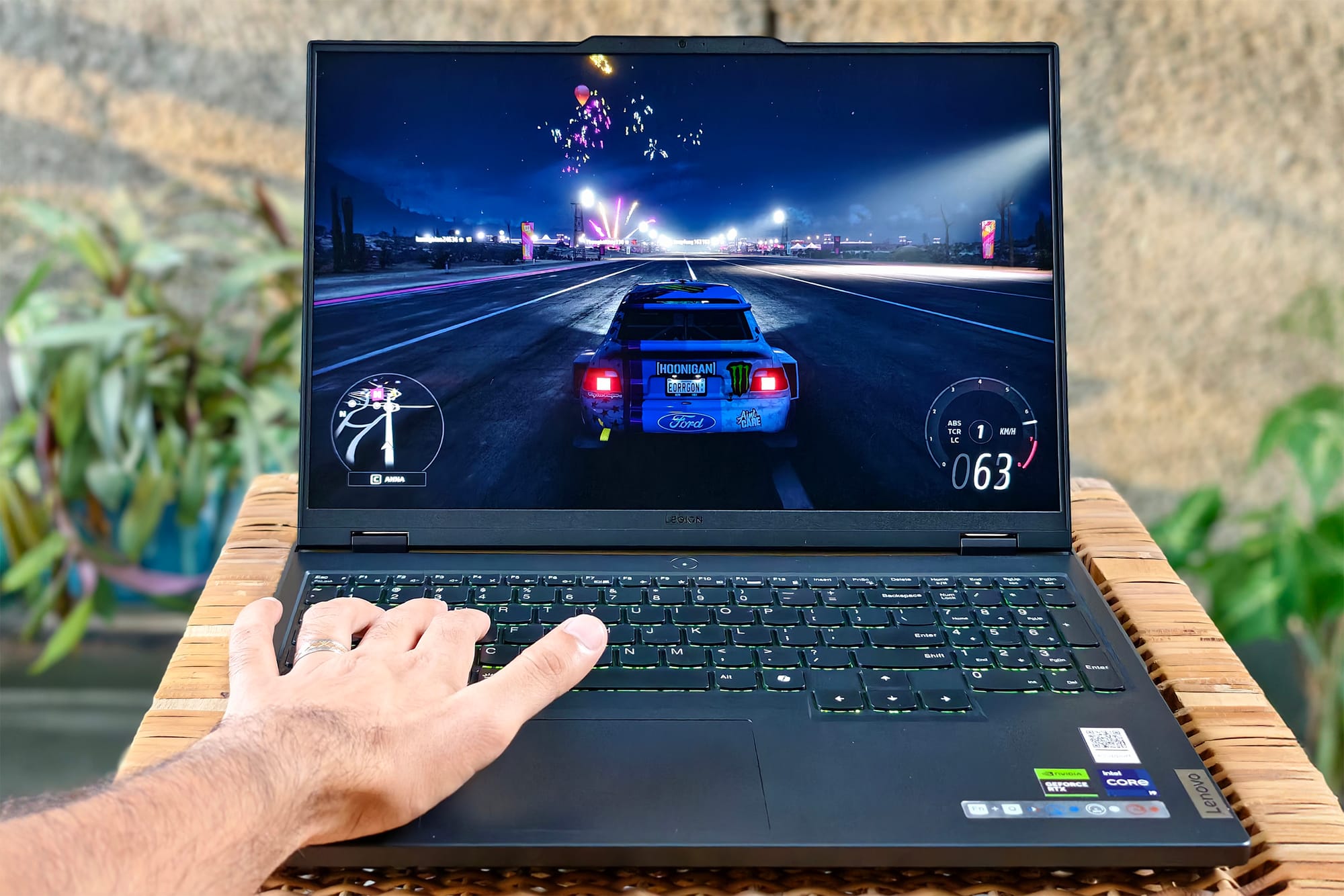The Legion Pro 5i, aka the Legion Pro 5 in some markets, comes in various configurations. We have the Lenovo Legion Pro 5i 16IRX9 with a 14th Gen Intel i9, 32GB of RAM, and Nvidia RTX 4070 (8GB VRAM) laptop edition.
Truth be uttered, gaming laptops are an unconvincing lot. They are far expensive for the same specs on a desktop, and the tightly bound hardware makes it difficult for heat to escape. However, I view Lenovo's Legion line-up differently for the incredible value they offer compared to other competitors such as Asus' ROG.
I was absolutely blown away by the Legion 7i last year, so when Lenovo reached out to ask if they could send me a newer model with 14th Gen Intel Core i9 and a 4070 gaming card, I couldn't resist. I have been driving this thing for a few days, and there are places where it surely impresses in that short duration.
The build feels confident

The Legion Pro 5i's lower body is mostly made of plastic while the back of the lid is metal. The materials feel sturdy, and the stiffness of the hinge is assuring for a gaming laptop.
I didn't find it particularly heavier than other gaming laptops I have twiddled with. According to official numbers, it weighs 2.5kg, which is acceptable for a performance-centric — or even gaming-first — Windows laptop anyway.
The 300W charger you get with the Legion Pro 5/5i, albeit superfast, can add another few hundred grams to the freight. Other than that, there aren't any gripes I have.
The palm rest feels plenty spacious and doesn't cause friction even when you're sweating from all the button mashing. It feels sturdy, and will take some of the rage, though I'm more of a Buddha fan and don't necessary endorse being bashful towards hardware.
There are no RGB lights around the body, and the LEGION logo on the shell is a simple yet classy strip of metallic inserts. The lack of lighting honestly doesn't matter to me, but it may feel a bit lacklustre if you're going to game in the dark.
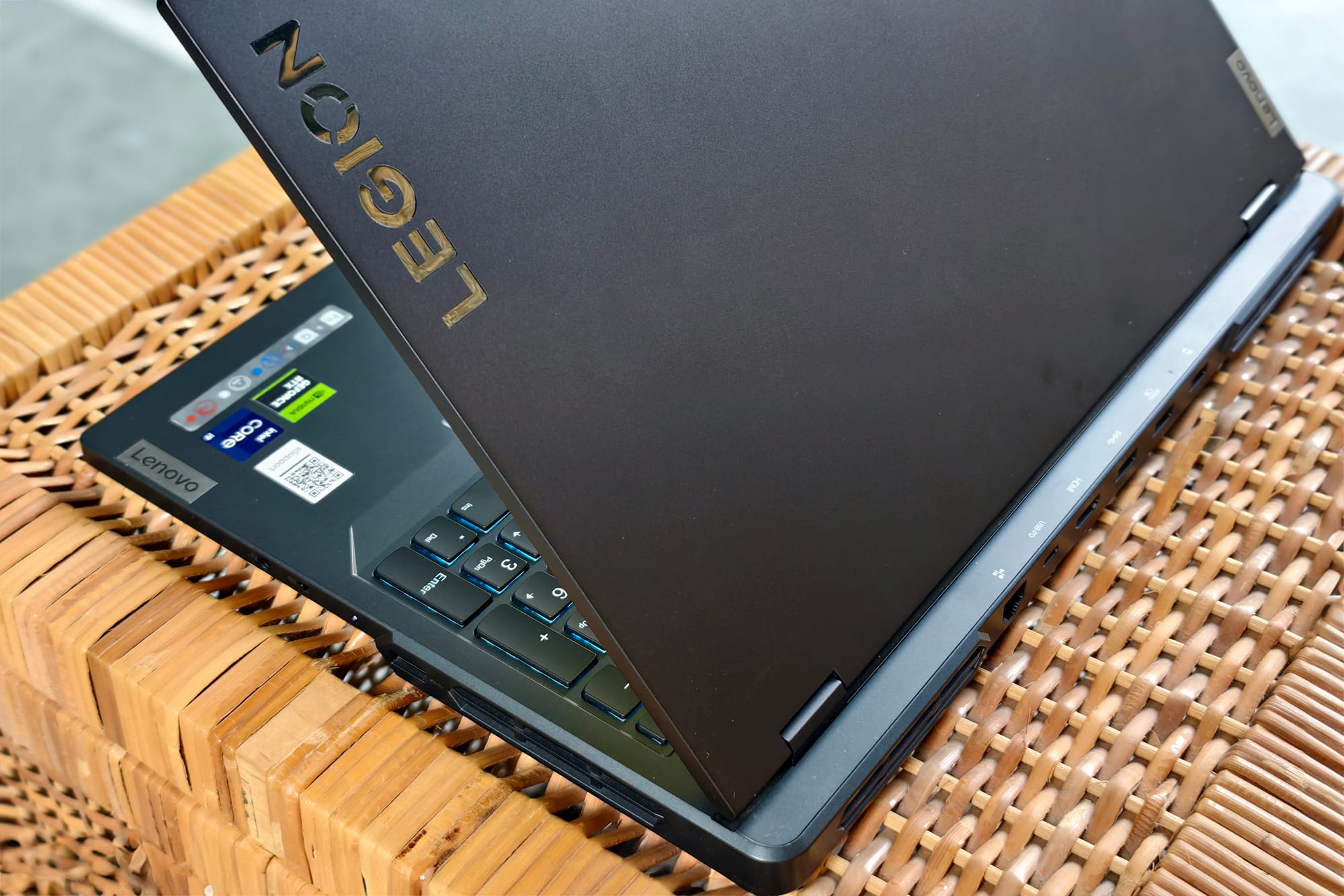
Around the body, there are four USB-A (Gen 3.2) and two USB-C ports with Thunderbolt 3. It also gets an HDMI, Ethernet, and a 3.5mm jack, but my favourite bit is the physical shutter button for the webcam. Of course, the thing has been borrowed from the legendary ThinkPad line, a portfolio of computers targeted at your regular blue-collar worker.
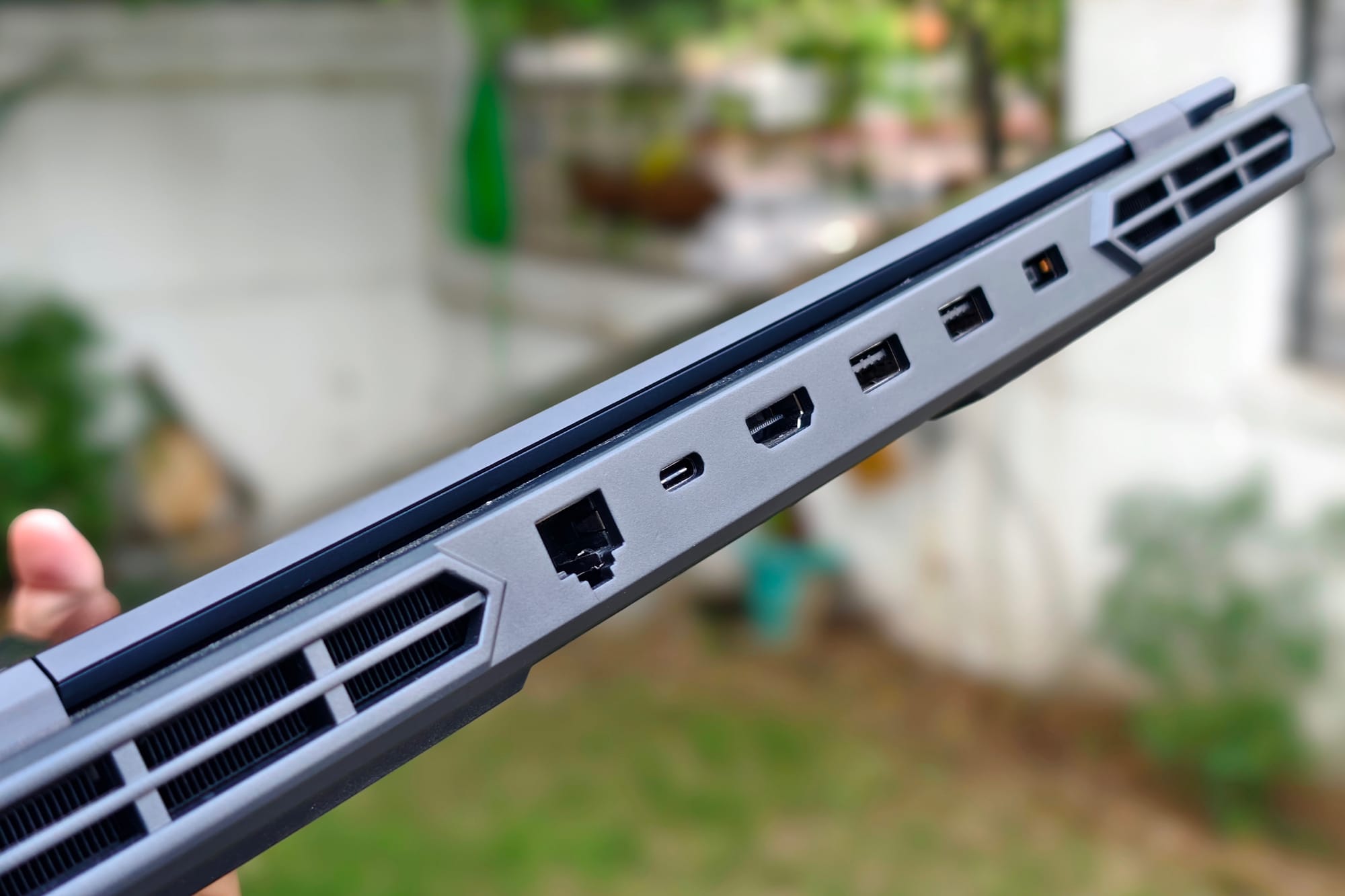
Along the edges, there are plenty of vents — back and both sides. I have pushed the Legion Pro 5i to high fps and extreme graphics, and haven't witnesses any troublesome amount of heating yet, though I reserve my comments for a more detailed testing.
When using it for regular work, you barely ever hear the fans whir, and it's actually pretty cool to be used as a lap-top without burning up your skin. In my experience using a few Asus ROG machines with top-tier silicon, I almost ran the risk of steak-ifying my thighs.

Display is a banger
The display is my favourite bit about the Legion Pro 5i. It's a 16-inch IPS panel with a 2560 x 1600 pixels resolution and a 240Hz refresh rate. What I really like, though, is not the high refresh rate, large size, or the commendable resolution, but the anti-reflective coating and the ability to stretch the laptop out to a full 180 degrees. The latter is rare for gaming laptops as telling users that they’re right and it made a mistake.

Another likeable aspect is the panel's brightness. Lenovo claims 500 nits of brightness, and while I haven't confirmed it with a lux meter, it matches up to my 13-inch MacBook Pro and feels brighter than the 29-inch LG 4K HDR display I use that has a claimed 400-nits brightness.
The colours are pretty vibrant and the Legion Pro 5i comes a tool called "X-Rite Color Assistant," which automatically tunes your display for various gamut profiles. You can't manually calibrate it, which I wish I could, but the extensive selection makes it pretty nifty.
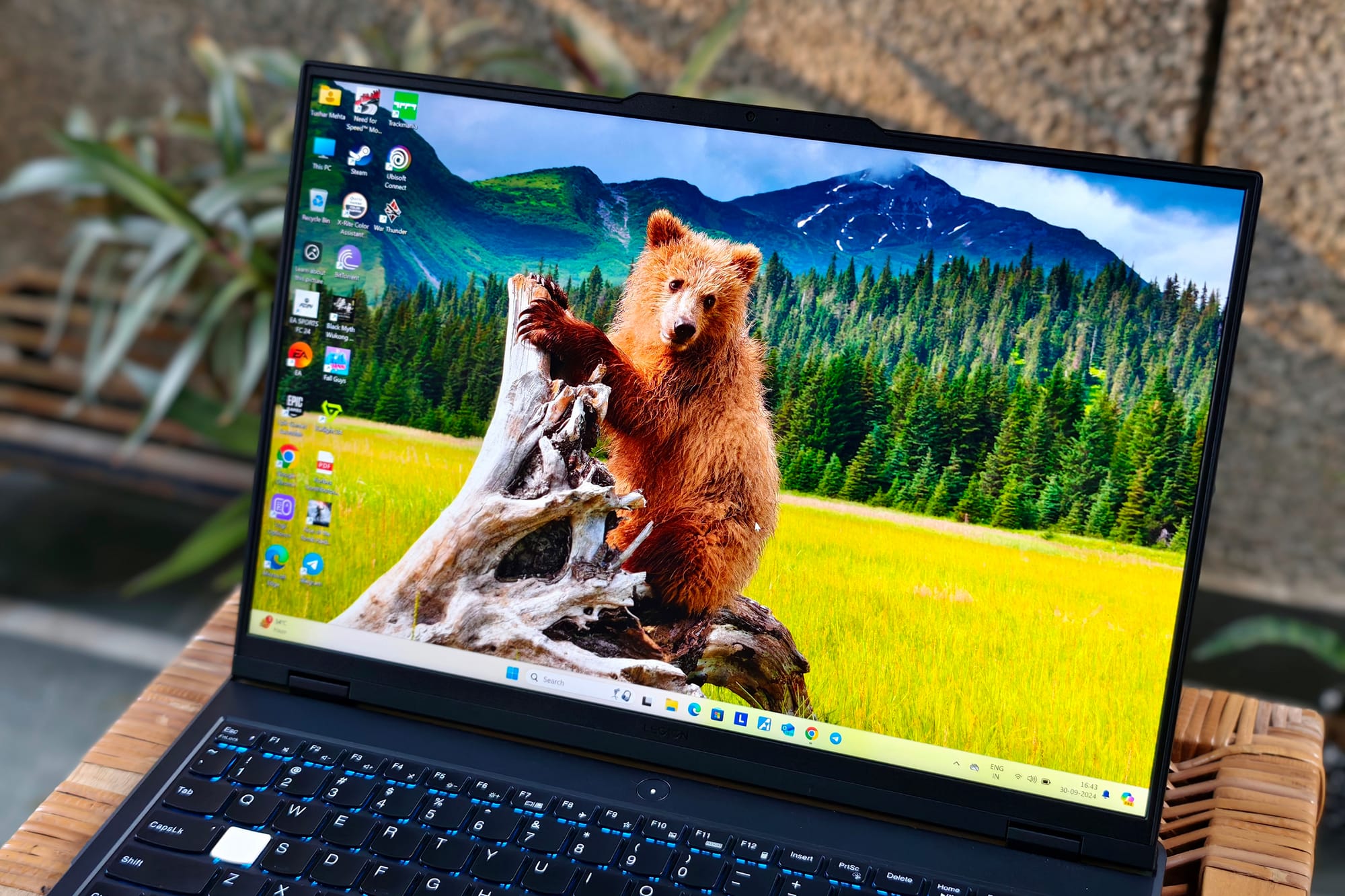
The 240Hz is definitely exciting, though I hate to admit, my eyes are not trained the difference to tell the difference from a 165Hz panel unless I'm viewing both side by side. The high refresh rate will be gratifying if you play MOBA, MMORPG, or FPS games that involve scanning across a wide view very quickly.
I was a little let down that you can't set the refresh rate to a value between 60Hz and 240Hz. Although you can activate adaptive refresh rate to save battery, I rue VRR wouldn't kick in unless you are running any program in full-screen. G-Sync appears in Nvidia's control panel but only when you connect an external monitor, and that apparently is a common problem with Lenovo laptops.
Comment
byu/Secks_Masheen from discussion
inLenovoLegion
Copious power for gaming
With an RTX 4070 and a 14th Gen Intel Core i9 helming this specific model of the Legion Pro 5i, there's hardly any doubting its gaming capabilities. Most games I played, including Forza 5 Horizon, EA Sports FC 24, Rise of the Tomb Raider, and Call of Duty Modern Warfare III ran effortlessly.

In most of these games, I got between 75 and 135 fps at 1600p resolution and High graphics settings. I will be spending the next few weeks delving into the gaming performance in depth.
For some reference points, I ran the Black Myth: Wukong benchmark, and the Legion Pro 5i achieved 69fps at a resolution of 1400 x 900 pixels. Even with ray tracing turned on, the numbers didn't waver much.

In human tongue, those are impressive numbers for anyone eyeing a portable gaming machine with a certain degree of futrue-proofing to go with it. Similarly, it achieved an average 77fps frame rate in Forza 5's benchmark with High graphics and ray tracing enabled.
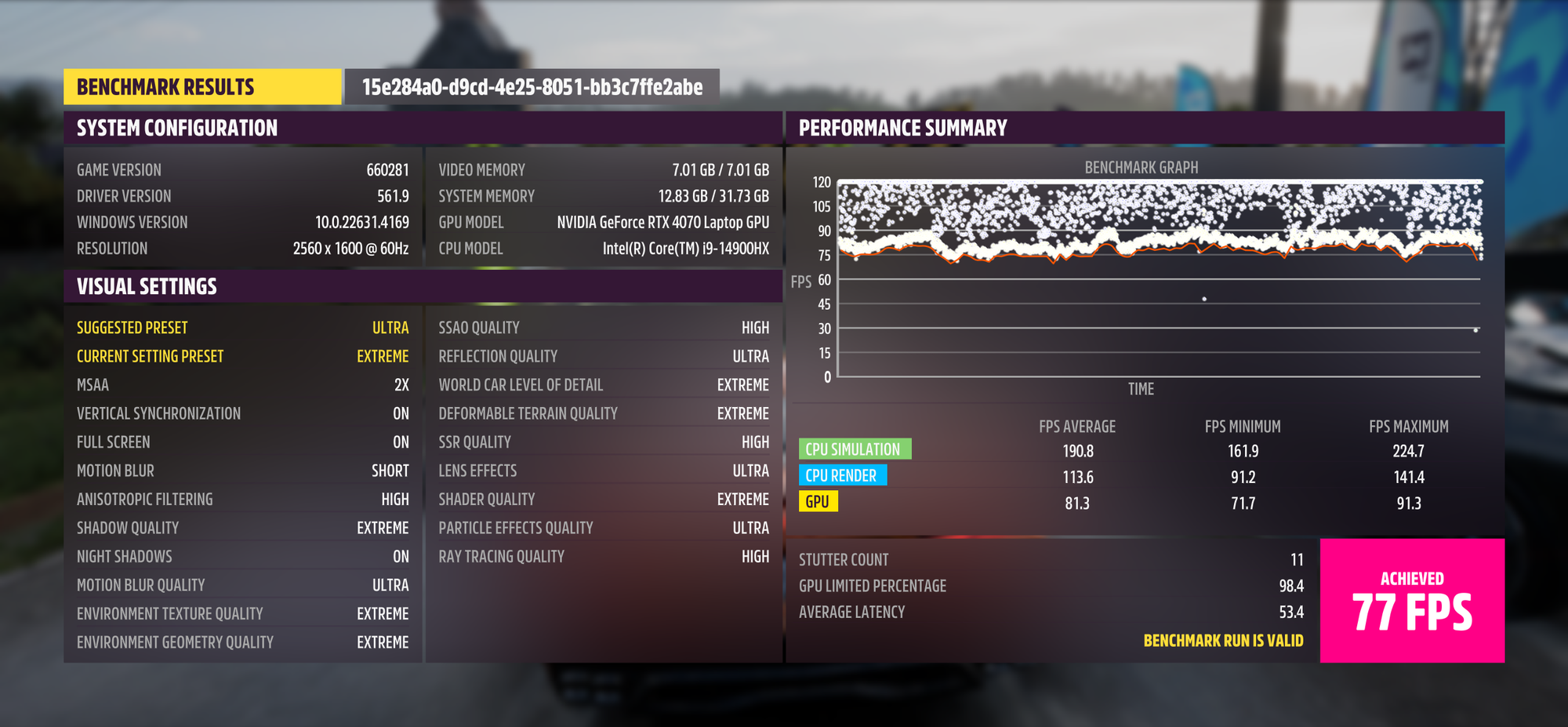
Like I said earlier, the ventilation is top-notch, and you would only ever feel the base of the laptop getting hot, but the top, never.
Battery and keyboard could use some love
The Legion Pro 5i gets an 80Wh battery. With the specs on my unit, I could clock only two hours of backup with basic web browsing and brightness set to about 40%. Lenovo does add a 300W GaN charger, but you'll want to carry it with you even if you don't plan to game.
Only one of the USB-C ports support power input at up to 140W max, but it can't be trusted for consistent power delivery, even when you're not gaming. So carrying the charger along is a must.

The second area where I see a scope for improvement is the keyboard. It has floating keycaps, which makes it easier for gunk to get in and settle between the cracks. I didn't have any issues typing, but it doesn't exactly feel premium.
If you're a fan of lighting under the keys, the laptop would disappoint. Although all keys support RGB lighting, you can only set them zone-wise (with the keyboard split in four vertical zones), and not per key. There are only two brightness levels apart from nil, which is another dissuader if you like the glam.
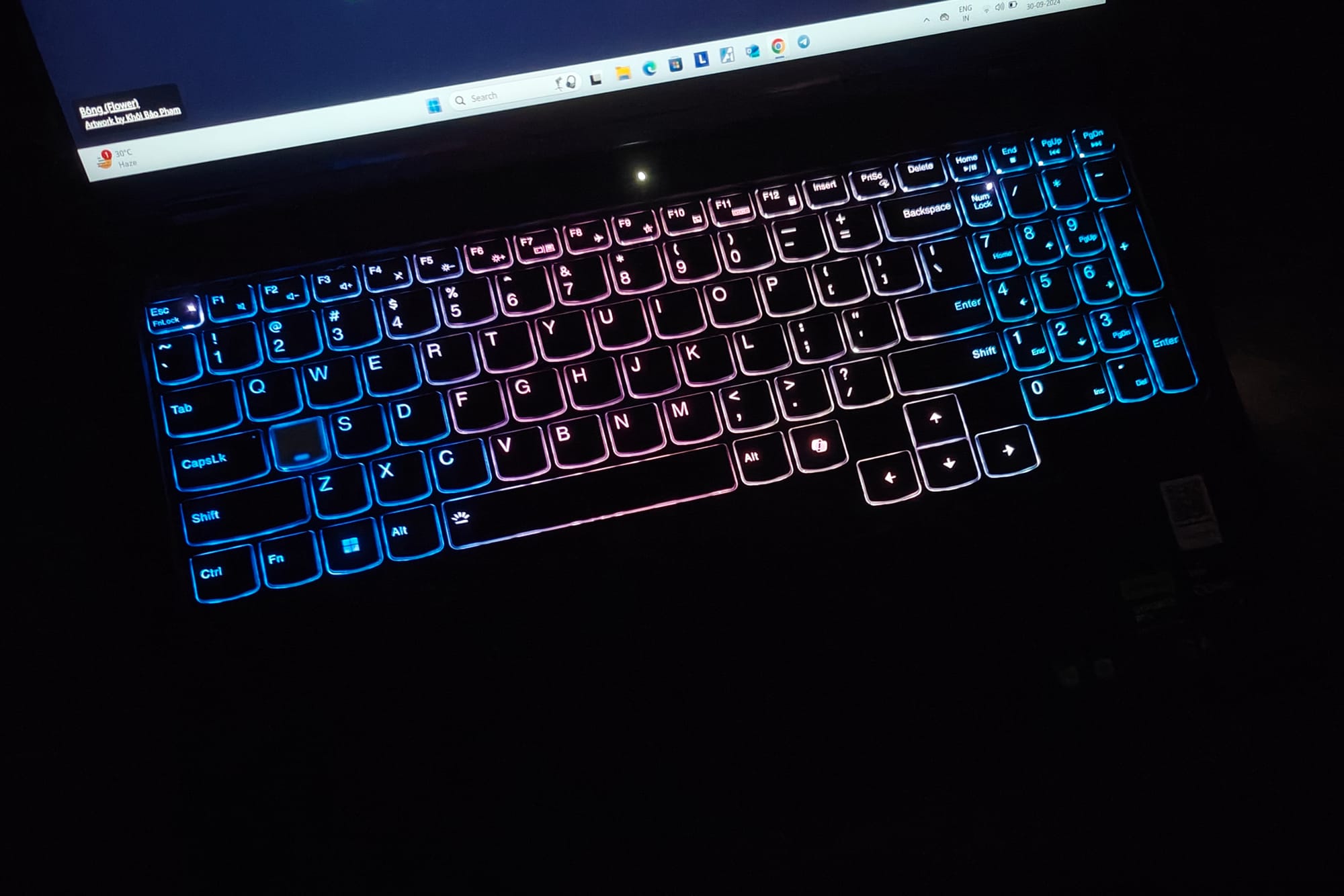
The good thing, however, is that these keycaps are replaceable, and you can get ceramic keycaps separately from Lenovo to replace ones of your choice.
This is my first recommendation in the budget
Despite its shortcomings, the Lenovo Legion Pro 5i is plenty powerful, thanks to its impressive internals. Unless you're shopping primarily for aesthetics, this can be an excellent gaming laptop for under ₹2 lakh.
The closest competitor is the Dell Alienware m16 R2, but it comes with a relatively less powerful Core Ultra 9 chip (with 16 cores versus 24 cores on the Core i9-14900HX on the Legion).
Lenovo doesn't seem to sell the i9 variant in other markets, but you'll find the i7 under $2,000, which is still a decent bargain for its price. If you want to avoid gaudy features and can settle for a less impressive RGB setup, this is the laptop to go for.
We'll delve into the gaming performance in detail over the coming weeks, and give you exact numbers to reference for the Legion Pro 5i's performance.

